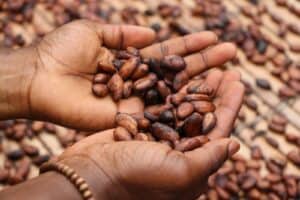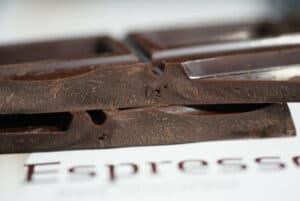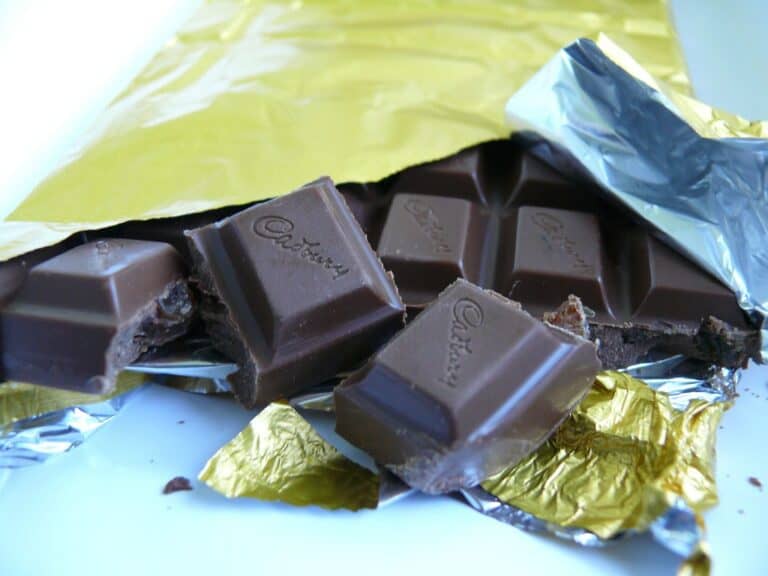When it comes to indulging in a sweet treat, chocolate ranks high on the list of favorites for many. But have you ever wondered, “Does chocolate contain caffeine?” You’re not alone. It’s a question that’s often asked by those sensitive to caffeine or simply curious about what goes into their favorite chocolate bars and treats. In this comprehensive guide, we’ll dive deep into the world of chocolate, cocoa beans, and caffeine content to answer this question and provide you with the information you need to make informed choices.
Understanding Caffeine and Its Effects
Before we delve into the specifics of chocolate, let’s start with the basics. Caffeine is a natural stimulant found in various plants, including coffee beans, tea leaves, and cocoa beans. It’s known for its ability to elevate mood, provide an energy boost, and even offer some potential health benefits when consumed in moderation. But how does it relate to chocolate?
Cacao vs. Cocoa: What’s the Difference?

To understand chocolate’s caffeine content, we must first differentiate between cacao and cocoa. These terms are often used interchangeably, but they refer to different stages in the chocolate-making process. Cacao is the raw form, while cocoa is the processed version. The caffeine content can vary significantly between the two.
Cacao beans are the seeds of the cacao tree, which is native to South America. They contain caffeine as a natural component. As cacao beans are harvested and undergo various processes, they transform into cocoa products, such as cocoa butter, cocoa powder, and cocoa solids. The level of caffeine can change during this transformation.
Does Chocolate Contain Caffeine?
Now, let’s address the burning question: Does chocolate contain caffeine? The answer is yes, but the amount varies depending on the type of chocolate and the processing methods used. Let’s break it down:
Dark Chocolate
- Dark chocolate typically contains more cocoa solids and less sugar than other types of chocolate. This means it tends to have a higher caffeine content. On average, a 1-ounce (28 grams) serving of dark chocolate can contain between 13 to 19 milligrams of caffeine.
Milk Chocolate
- Milk chocolate, on the other hand, has a lower cocoa solids content due to the addition of milk powder. Consequently, it contains less caffeine compared to dark chocolate. A 1-ounce serving of milk chocolate usually contains around 7 to 10 milligrams of caffeine.
White Chocolate
- White chocolate, interestingly, contains no cocoa solids. It’s primarily made from cocoa butter, sugar, and milk solids. As a result, white chocolate is caffeine-free.
Caffeine in Chocolate vs. Coffee
- To put chocolate’s caffeine content in perspective, let’s compare it to coffee. A typical 8-ounce (237-milliliter) cup of brewed coffee contains between 95 to 165 milligrams of caffeine. In comparison, chocolate contains significantly less caffeine per serving.
Factors Affecting Caffeine Content
- The caffeine content in chocolate can also be influenced by factors such as the type of cocoa beans used, the roasting process, and the cocoa percentage in the final product. Generally, higher cocoa percentages in chocolate mean more caffeine.
Theobromine – The Chocolate Buzz
While we’ve been talking about caffeine, it’s essential to mention another stimulant found in chocolate: theobromine. Theobromine is in the same family as caffeine and contributes to the “buzz” some people feel when eating chocolate. However, it affects the central nervous system differently from caffeine and is found in varying amounts in different types of chocolate.
Caffeine Sensitivity and Chocolate

Caffeine sensitivity is a highly individualized aspect of our physiology. It’s influenced by a combination of genetic factors, lifestyle, and even our overall health. Some people are more sensitive to caffeine, while others can consume it without much noticeable effect. When it comes to chocolate, understanding your own caffeine sensitivity is essential for a few reasons:
1. Varying Effects: People with different levels of caffeine sensitivity will experience varying effects from even small amounts of caffeine. For those who are highly sensitive, consuming chocolate might lead to increased heart rate, jitteriness, or even anxiety, especially if consumed in large quantities. On the other hand, individuals with lower sensitivity may not notice any significant effects.
2. Daily Cumulative Intake: Sensitivity to caffeine extends beyond chocolate. It’s essential to consider your overall caffeine intake from various sources throughout the day. For instance, if you’re already a regular coffee drinker or consume caffeinated sodas, your daily caffeine intake can quickly add up. Adding chocolate to the mix can push you closer to your personal caffeine threshold.
3. Timing Matters: When you consume chocolate also plays a role in how it affects you. Having a piece of chocolate right before bedtime might disrupt your sleep if you’re sensitive to caffeine. Conversely, consuming chocolate in the morning or early afternoon may have less noticeable effects.
4. Health Considerations: People with certain medical conditions, such as heart arrhythmias or anxiety disorders, might be more susceptible to the stimulating effects of caffeine. It’s especially crucial for individuals with these conditions to be aware of their caffeine intake, including chocolate.
5. Age and Tolerance: Caffeine sensitivity can change with age. Younger individuals, particularly adolescents, often have lower tolerance levels for caffeine and may feel its effects more intensely. With regular exposure to caffeine, tolerance can develop, meaning the same amount of caffeine has a reduced impact over time.
6. Pregnancy and Caffeine Sensitivity: Pregnant individuals are often advised to limit caffeine intake due to potential effects on the developing fetus. High caffeine sensitivity during pregnancy can lead to stronger reactions to even small amounts of caffeine, making it even more crucial to monitor chocolate consumption.
How to Manage Caffeine Sensitivity in Relation to Chocolate

If you suspect that you are sensitive to caffeine or if you’ve experienced discomfort after consuming chocolate, here are some practical steps to manage your caffeine intake:
1. Read Labels: Check the packaging of chocolate products for information on caffeine content. Some manufacturers provide this information to help consumers make informed choices.
2. Choose Your Chocolate Wisely: Opt for chocolates with lower cocoa percentages, as they tend to have less caffeine. Milk chocolate, for example, generally contains less caffeine than dark chocolate.
3. Limit Consumption: Be mindful of portion sizes. Enjoy chocolate in moderation, and try not to consume large quantities in one sitting.
4. Track Your Intake: Keep a record of your daily caffeine intake from all sources, including chocolate, coffee, tea, and energy drinks. This can help you stay within your comfort zone.
5. Experiment with Timing: Pay attention to when you consume chocolate. If you find that it affects your sleep or causes jitters, try enjoying it earlier in the day.
6. Consider Alternatives: If caffeine sensitivity remains a concern, consider caffeine-free or decaffeinated chocolate options. These are available and can provide the taste of chocolate without the caffeine.
Decaffeinated Chocolate and Other Options
For those who want to enjoy chocolate without the caffeine, there are decaffeinated chocolate options available. The decaffeination process removes most of the caffeine, making it a suitable choice for those looking to avoid caffeine entirely.
Decaffeinated Chocolate Options
Decaffeinated chocolate is a fantastic alternative for individuals who love the taste of chocolate but wish to avoid caffeine. The decaffeination process is meticulously designed to remove most of the caffeine from cocoa beans while preserving the rich, chocolatey flavor we all adore.
This process often involves soaking or steaming the cocoa beans to extract the caffeine content. Once the beans are thoroughly decaffeinated, they can be used to create a variety of decaffeinated chocolate products, including bars, truffles, and hot chocolate mixes.
A Suitable Choice for Caffeine Avoidance
Decaffeinated chocolate is particularly popular among those who are sensitive to caffeine or have medical reasons to limit their caffeine intake. It offers a way to savor the creamy, delightful taste of chocolate without the potential jitters or sleep disturbances associated with caffeine consumption. Additionally, it can be a thoughtful choice for individuals who enjoy chocolate in the evening but want to ensure a good night’s sleep.
Comparing Caffeine Levels in Chocolate Types

When it comes to understanding how much caffeine is in your favorite chocolate, it’s essential to recognize that not all chocolates are created equal. The caffeine levels can vary significantly depending on the type of chocolate and its ingredients. Let’s take a closer look at how different chocolates stack up in terms of caffeine content.
Dark Chocolate vs. Milk Chocolate
If you’re watching your caffeine intake, it’s worth noting that dark chocolate generally contains more caffeine than milk chocolate. While there’s some variation between brands and specific products, a typical 1-ounce (28 grams) serving of dark chocolate can contain between 13 to 19 milligrams of caffeine. In contrast, milk chocolate tends to have a lower caffeine content, usually averaging around 7 to 10 milligrams per serving. So, if you’re looking for a milder caffeine boost from your chocolate, milk chocolate might be your go-to choice.
Caffeine Levels in Hot Cocoa
Hot cocoa, often made from cocoa powder or chocolate syrup mixed with milk, typically contains less caffeine than a solid chocolate bar. The caffeine content in hot cocoa can vary depending on factors like the brand and cocoa concentration. On average, an 8-ounce (237-milliliter) cup of hot cocoa contains approximately 3 to 13 milligrams of caffeine, which is significantly lower than what you’d find in coffee or some chocolate bars. This makes hot cocoa a suitable option for those seeking a chocolatey, warming drink with a milder caffeine content.
Cocoa Beans and Caffeine Levels
The caffeine content in chocolate is closely tied to the type of cocoa beans used in its production. Cocoa beans naturally contain caffeine as a protective mechanism for the cacao plant. Different varieties of cocoa beans, such as those from South America or West Africa, may have varying caffeine levels. The roasting process also affects caffeine levels, with longer roasting times typically resulting in lower caffeine content.
Final Thoughts: Does Chocolate Contain Caffeine?
In conclusion, yes, chocolate does contain caffeine, but the amount varies depending on the type of chocolate and processing methods. Dark chocolate tends to have the highest caffeine content, while milk chocolate contains less, and white chocolate is caffeine-free. The caffeine in chocolate is considerably lower than that in coffee or other caffeinated beverages, making it a moderate source of this stimulant.
So, the next time you savor a piece of chocolate, you can appreciate not only its delicious flavor but also the slight caffeine boost it provides. Just remember, when it comes to caffeine, moderation is key. Indulging in your favorite chocolate treats can be a delightful experience, and now you have a better understanding of what goes into that sweet delight.
When it comes to answering the question, “Does chocolate contain caffeine?” – you can confidently say yes, but with the added knowledge of the varying levels and the factors that influence them. Enjoy your chocolate responsibly, and savor the flavors that cocoa beans bring to this beloved treat.
Other suggested articles:
